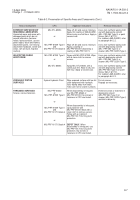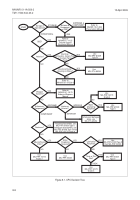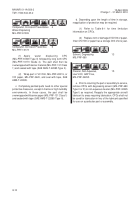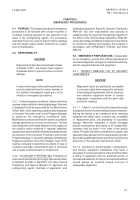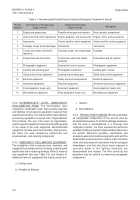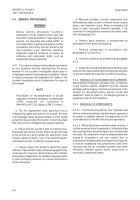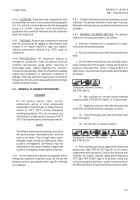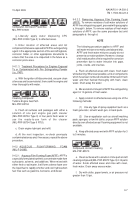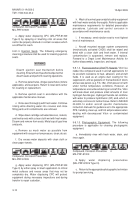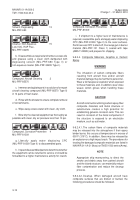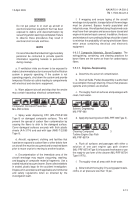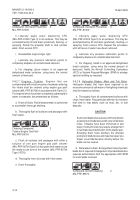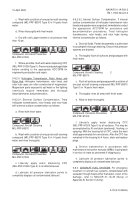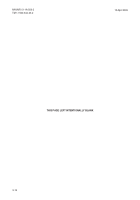TM-1-1500-344-23-2 - Page 161 of 240
9-7
NAVAIR 01-1A-509-2
TM 1-1500-344-23-2
15 April 2009
Compound, Corrosion Preventive
4
MIL-PRF-81309
g. Liberally apply water displacing CPC
(MIL-PRF-81309 Type II) to affected areas.
h. Enter location of affected areas and list
components that were exposed to PKP fire extinguishing
agent in the appropriate section of the aircraft logbook,
corrosion folder, or other appropriate documents to
ensure that the area is re-inspected in the future as a
corrosion prone area.
9-6.1.3. Treatment Procedures for Engines Exposed
To or Contaminated with Fire Extinguishing Powder
(i.e., PKP).
a. With the ignition off/disconnected, vacuum clean
all excess and loose material, then crank the engine and
rinse thoroughly with water.
Cleaning Compound
3
Turbine Engine Gas Path
MIL-PRF-85704
b. Flush all surfaces and passages with either a
solution of one part engine gas path cleaner
(MIL-PRF-85704 Type II) in four parts fresh water or
use the ready-to-use form of the cleaner
(MIL-PRF-85704 Type II RTU).
c. Drain engine lubricant and refill.
d. At the next inspection, re-check previously
contaminated areas and, if necessary, repeat the above
procedure.
9-6.2. AQUEOUS
FILM-FORMING
FOAM
(MIL-F-24385).
9-6.2.1. Aqueous Film-Forming Foam (AFFF). AFFF is
a specially formulated synthetic concentrate made from
surfactants, solvents, and additives. When mixed with
either fresh or salt water, it will form a dense foam over
the liquid fuel to rapidly smother and cool hydrocarbon
fuel fires such as gasoline, kerosene, and diesel.
9-6.2.2. Removing Aqueous Film Forming Foam
(AFFF). To remove residues of salt water solutions of
AFFF fire extinguishing agent, proceed with paragraphs
a. through h. below. To remove residues of fresh water
solutions of AFFF, use the same procedure but omit
paragraphs b. through d.
NOTE
The following procedure applies to AFFF and
salt water mixtures normally used aboard ship.
AFFF and fresh water mixtures usually do not
present a corrosion problem. However, cleanup
of all residues after a fire is required for corrosion
prevention due to water intrusion into gaps,
joints, cracks, and crevices.
a. Flush all affected areas with clean, fresh water
while draining. Whenever possible, units or components
which have been removed should be immersed in fresh
water and then flushed thoroughly with fresh, clean
water. Drain away the water.
b. Mix a solution of one pint of AFFF fire extinguishing
agent in 10 gallons of fresh water.
c. Apply solution to affected areas using one of the
following methods:
(1)
Use any type of spray equipment such as a
foam generator, solvent wash gun, or back pack.
(2)
Use an applicator such as aircraft washing
pads, sponges, or low lint cloths, or pour AFFF solution
directly over affected areas if foaming equipment is not
available.
d. Keep affected areas wet with AFFF solution for 3
to 5 minutes.
Compound, Aircraft Cleaning
2
MIL-PRF-85570
e. Clean surfaces with a solution of one part aircraft
cleaning compound (MIL-PRF-85570 Type II) in 14 parts
of water. Scrub affected areas and rinse with clean,
fresh water. Drain away excess water.
f. Dry with cloths, paper towels, or air pressure not
greater than 10 psi.
Back to Top

